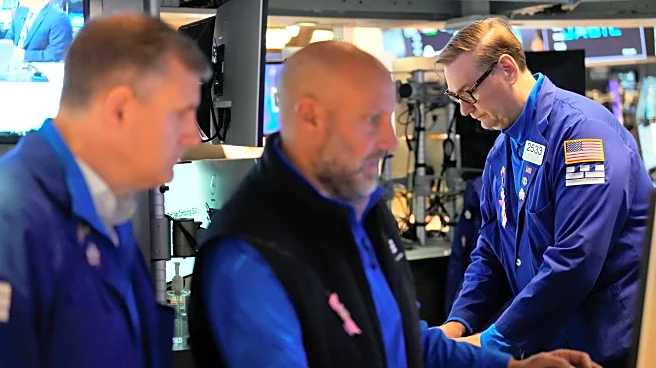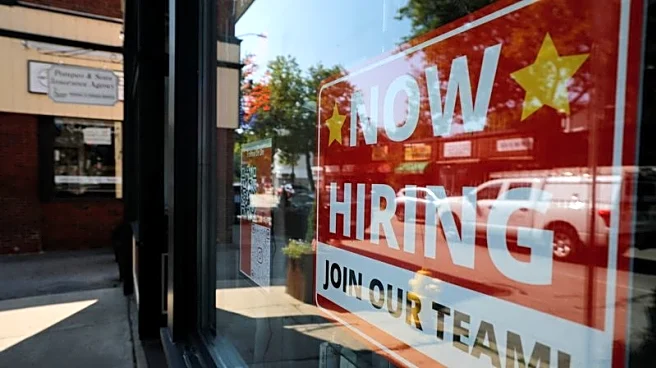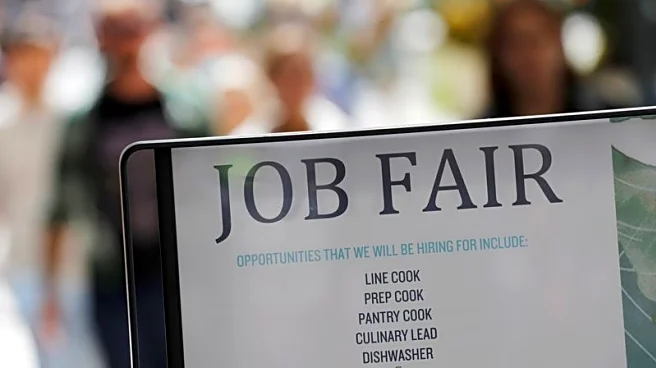What's Happening?
The U.S. labor market showed signs of softening in August, with job openings increasing slightly while hiring declined. According to the Labor Department's JOLTS report, job openings rose by 19,000 to 7.227 million, but hiring fell by 114,000, particularly in the trade, transportation, and utilities sectors. The labor market's sluggishness is attributed to factors such as tariffs on imports and the rise of artificial intelligence, as well as an immigration crackdown reducing labor supply. The Federal Reserve may consider further interest rate cuts to support the labor market amid these conditions.
Why It's Important?
The softening labor market could have significant implications for U.S. economic policy and consumer confidence. With fewer job opportunities and declining hiring rates, the Federal Reserve might be prompted to cut interest rates to stimulate economic activity. This situation could affect consumer spending and business investment, potentially leading to slower economic growth. The labor market's condition also influences public sentiment, as reflected in the Conference Board survey showing increased pessimism about job availability.
What's Next?
The potential government shutdown could delay key economic data releases, complicating the Federal Reserve's decision-making process. Economists expect the Fed to focus more on labor market indicators, with nonfarm payrolls projected to increase modestly in September. The upcoming employment report will be crucial in determining the Fed's next steps regarding interest rates and economic support measures.
Beyond the Headlines
The labor market's challenges highlight broader issues such as the impact of immigration policies and technological advancements on employment. The balance between labor demand and supply is becoming increasingly complex, requiring nuanced policy responses. The evolving labor market dynamics may necessitate adjustments in workforce development and training programs to address skill gaps and employment opportunities.












